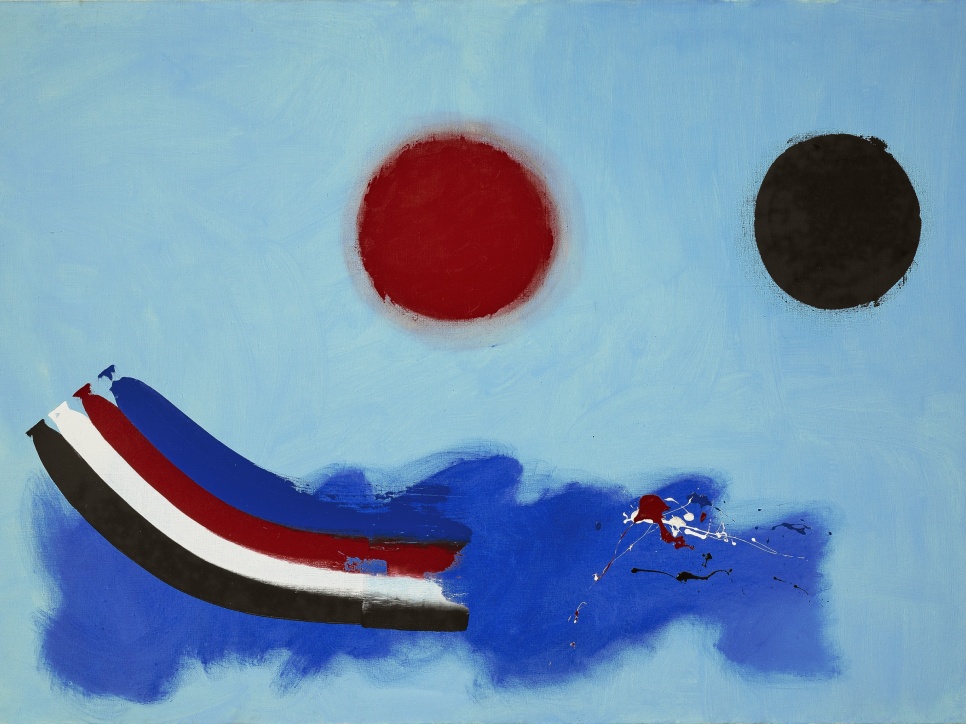
Mark Rothko was born Marcus Rothkowitz on September 25, 1903 in Dvinsk, Russia (today Daugavpils, Latvia). Rothko and his family migrated to the United States when he was ten years old and settled in Portland, Oregon. In 1921, Rothko attended Yale University, but in the fall of 1923 he gave up his studies and moved to New York City, where he enrolled at the Art Students League, briefly studying under Max Weber. In the late 1920s, Rothko met the artist Milton Avery and was profoundly influenced by his simplified and colorful depictions of domestic subjects.
From 1942 to 1947, Rothko worked in association with fellow artist Adolph Gottlieb, and he developed a special interest in Surrealism. His works of this period draw upon that interest, as well as Greek mythology, primitive art, Christian tragedy and Symbolism. It was also a period of Rothko’s life dominated by anxiety, sadness, and the worst years of World War II, all of which seeped into his work. During this time, Rothko began working on a larger scale and experimenting with horizontal bands and new techniques, creating a luminosity that would become central to his oeuvre.
In 1945, Peggy Guggenheim organized a solo exhibition of Rothko's work at her Art of this Century Gallery in New York. By 1947, Rothko discontinued the use of mythology in his paintings, focusing more on abstraction. Linear elements were progressively eliminated and asymmetrically arranged patches of color became the basis of Rothko’s compositions. He began to paint the edges of his stretched canvases, which he displayed without confining frames. He also abandoned the act of titling of his work in order to create a pure interpretation in the viewer’s eyes. By the 1950s, Rothko began to produce his most famous works: paintings made of two or three bands of vibrant color, applied with a thin layer of binder mixed with pigment directly onto uncoated and unprimed canvas, creating a dense mixture of overlapping colors and shapes. In the late 1950s, his palette of colors became darker, a development related to his “Seagram” murals, commissioned for the Four Seasons Restaurant in 1958, the first of three other mural projects. He would continue working in this manner for the rest of his life.
His works are included in the public collections of the Detroit Institute of Arts; the Solomon R. Guggenheim Museum, New York; the Metropolitan Museum of Art, New York; the Museum of Fine Arts, Boston; the Museum of Fine Arts, Houston; the Museum of Modern Art, New York; the National Gallery of Art, Washington D.C; the San Francisco Museum of Modern Art; the Phillips Collection, Washington D.C; the Brooklyn Museum of Art, New York; the Cleveland Museum of Art; the Folkwang Art Museum, Essen; the Fukuoka Art Museum; the Hirshhorn Museum and Sculpture Garden, Washington D.C; the Kunstmuseum, Basel; the Modern Art Museum of Fort Worth; the Museo Nacional de Bellas Artes; Buenos Aires; the Museum of Contemporary Art, Los Angeles; the Tate Gallery, London; the Thyssen-Bornemisza Museum, Madrid; the Walker Art Center, Minneapolis; and the Whitney Museum of American Art, New York, among others.
Mark Rothko died on February 25, 1970 in his New York studio. A posthumous retrospective, “Mark Rothko 1903-1970,” was organized at the Museum of Modern Art, New York in 1970.